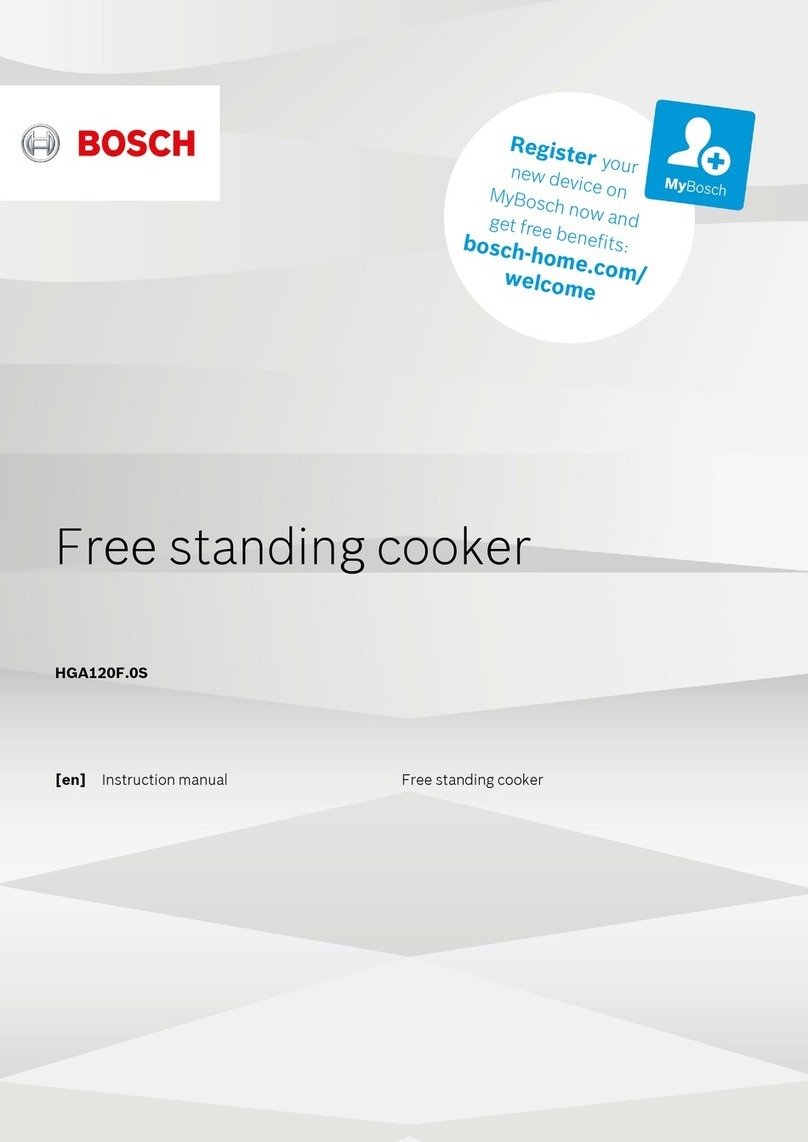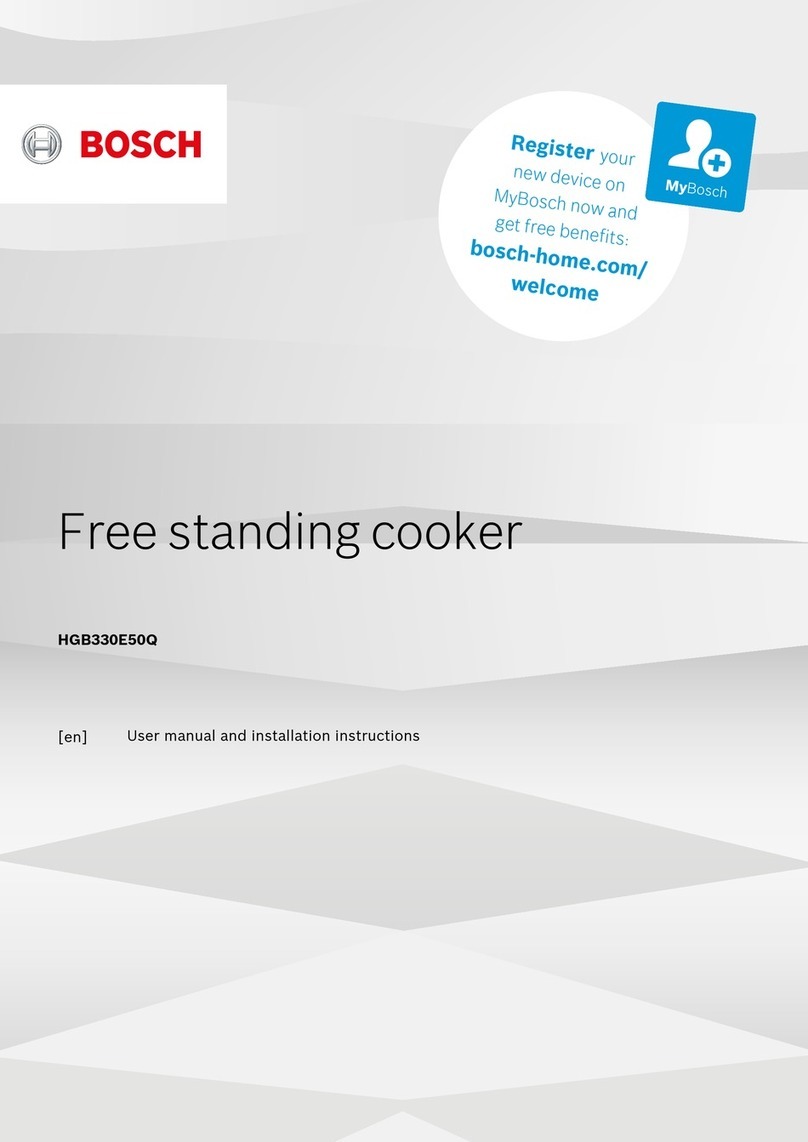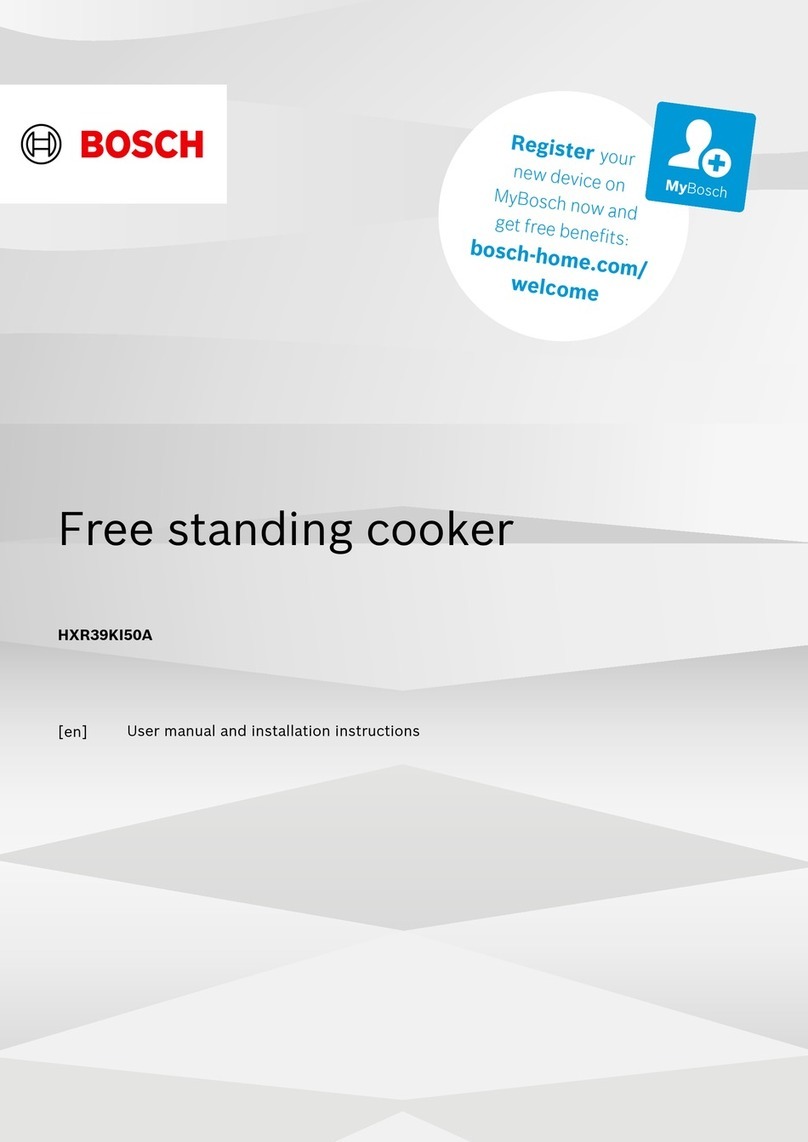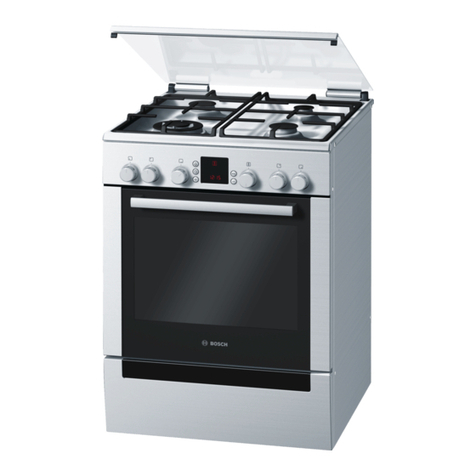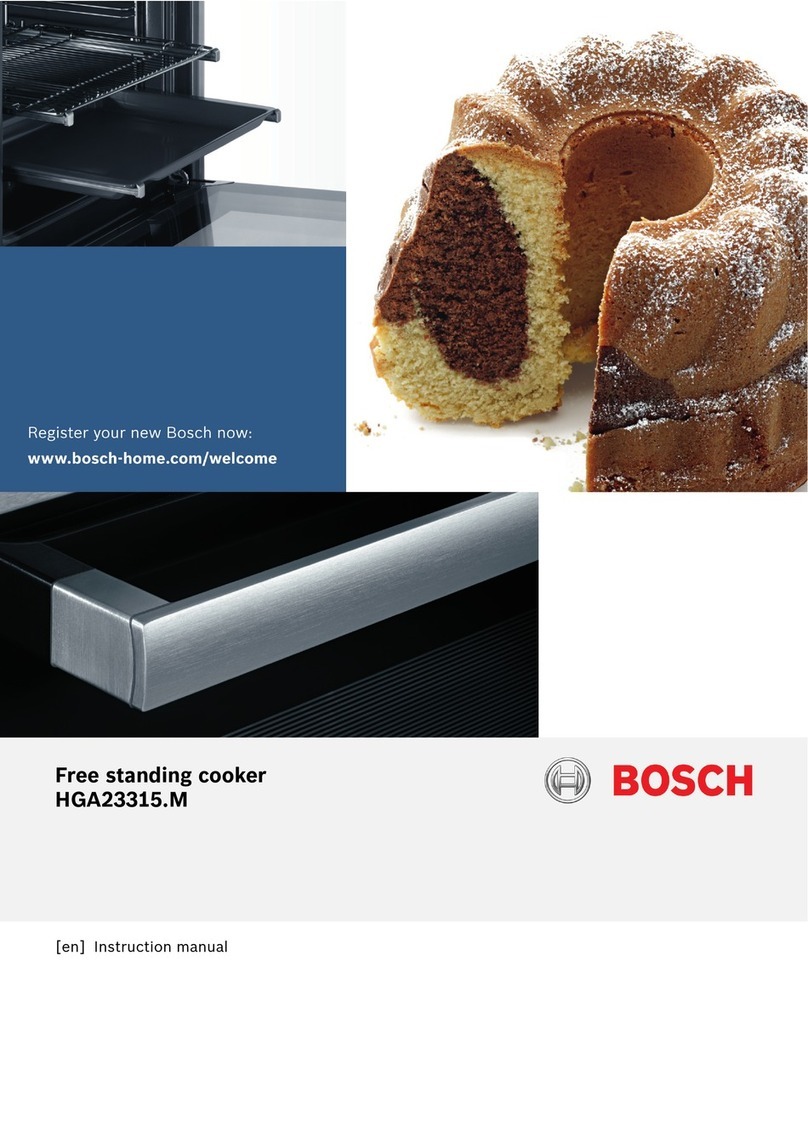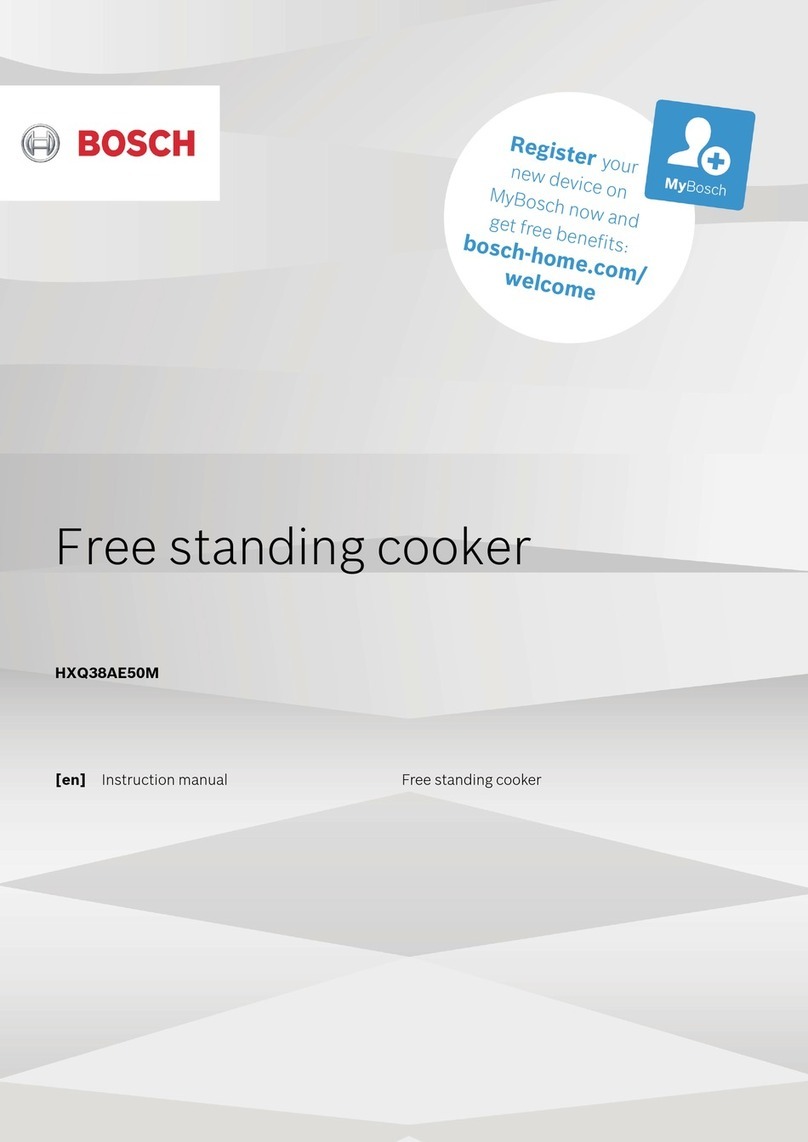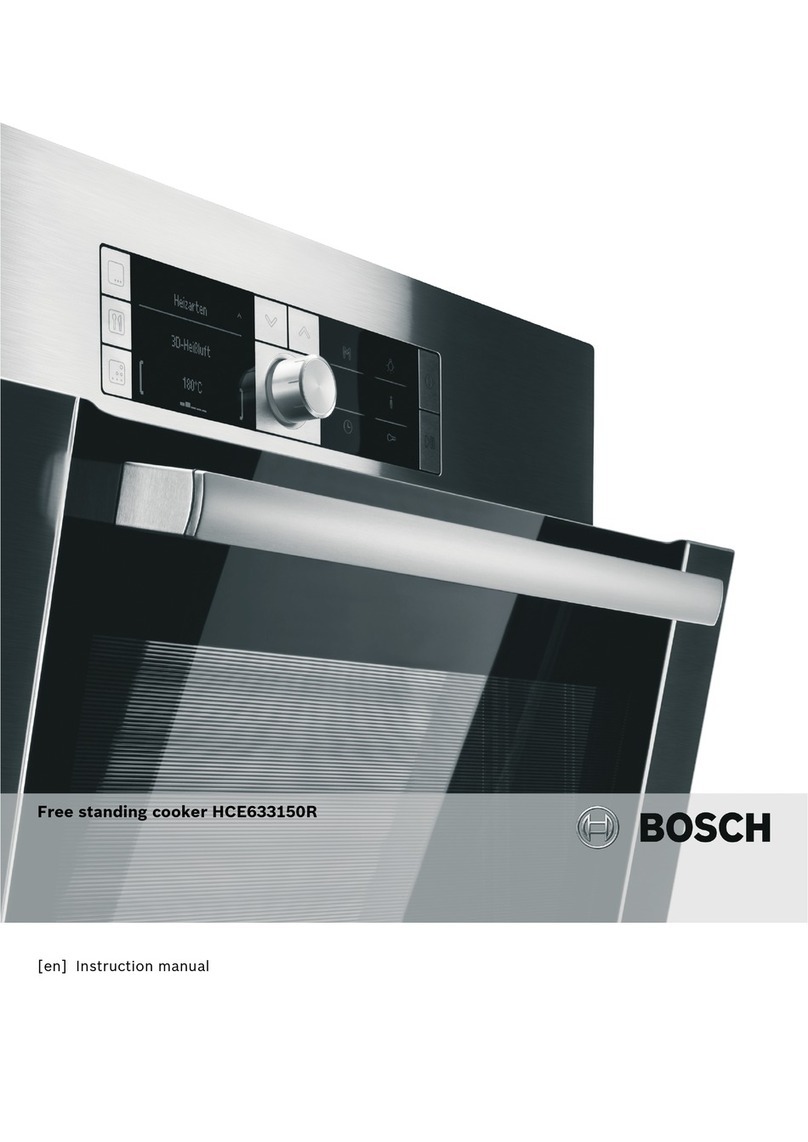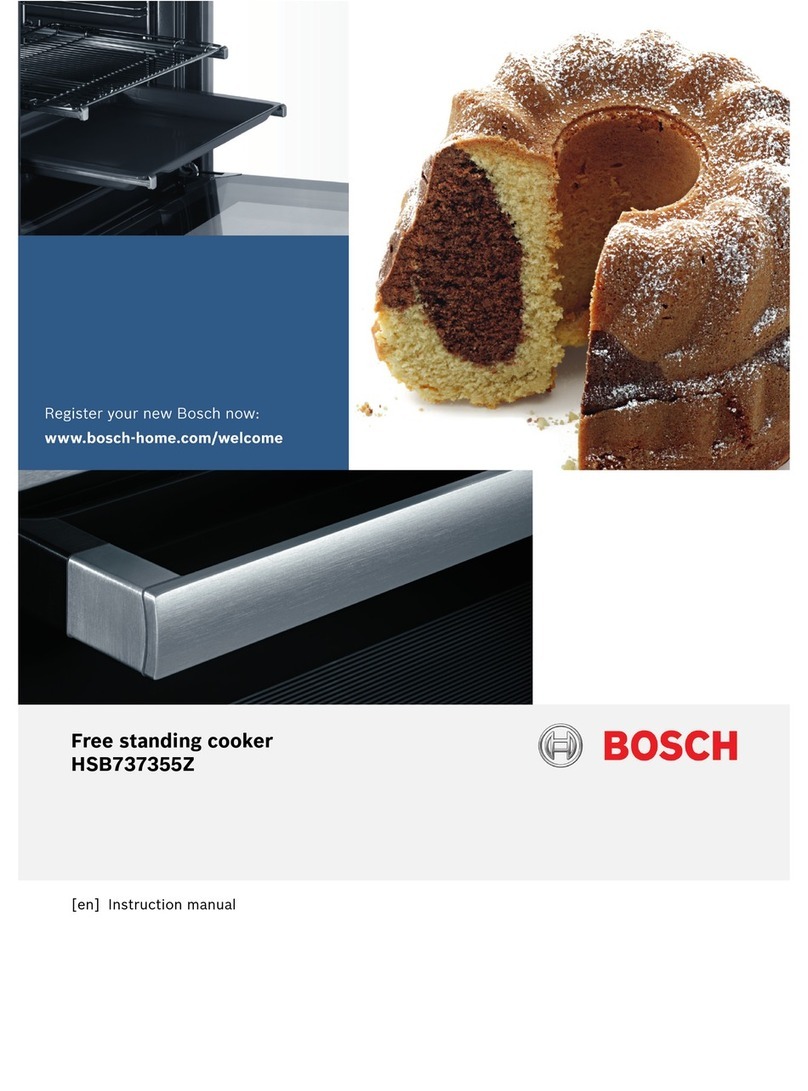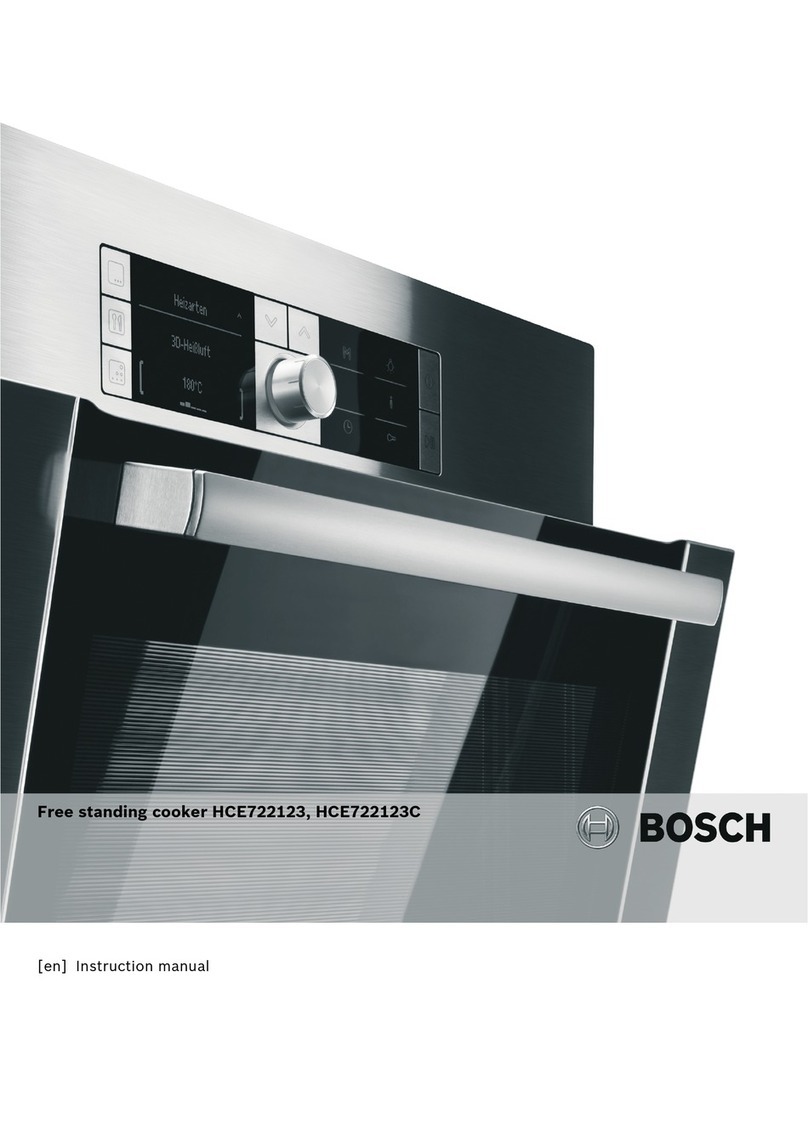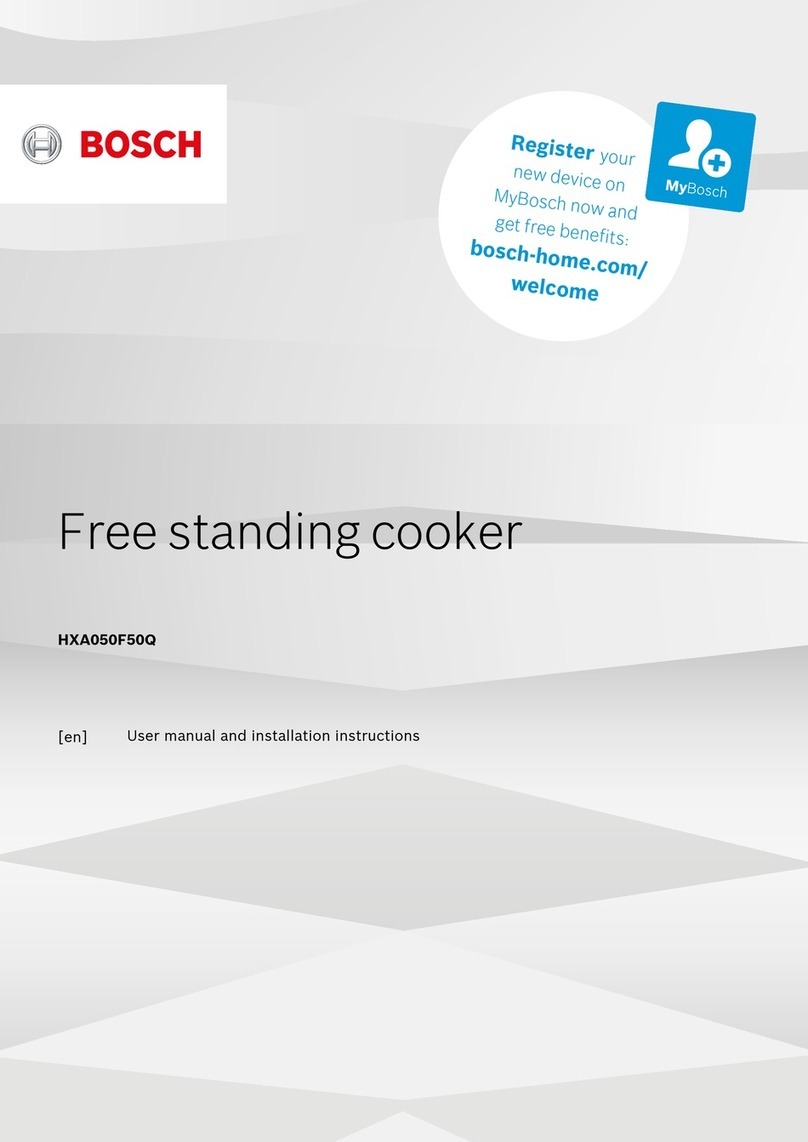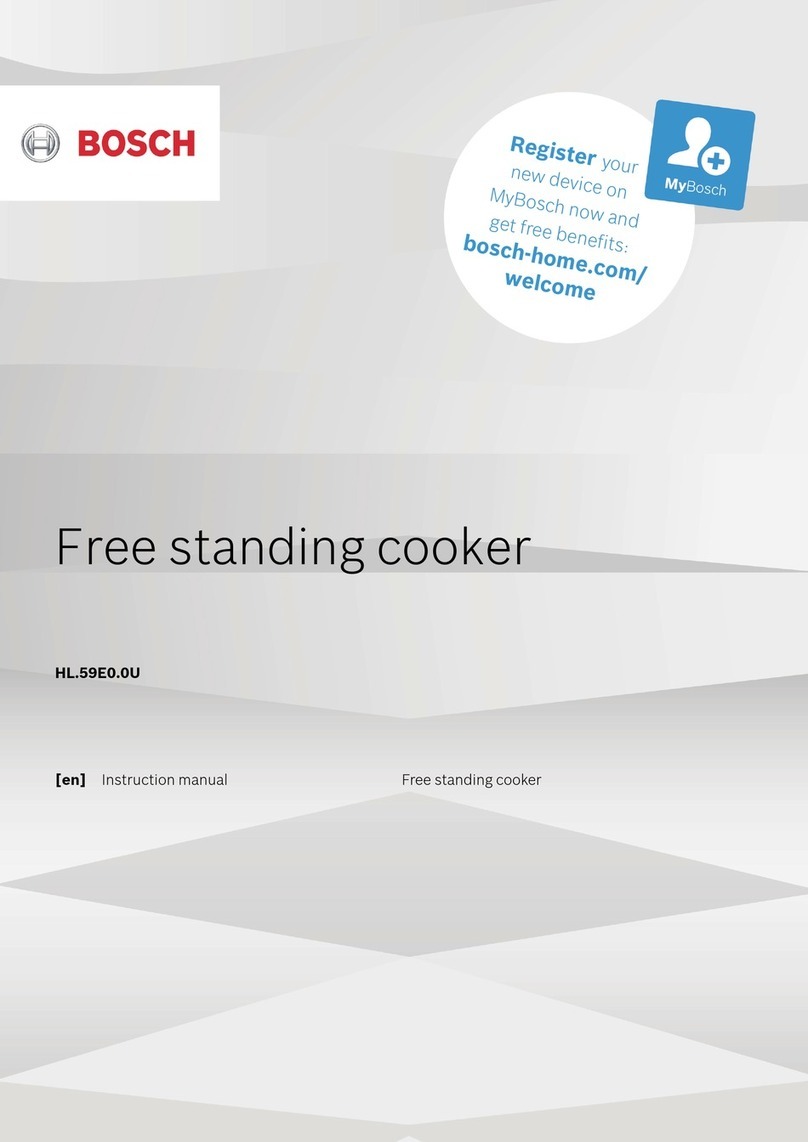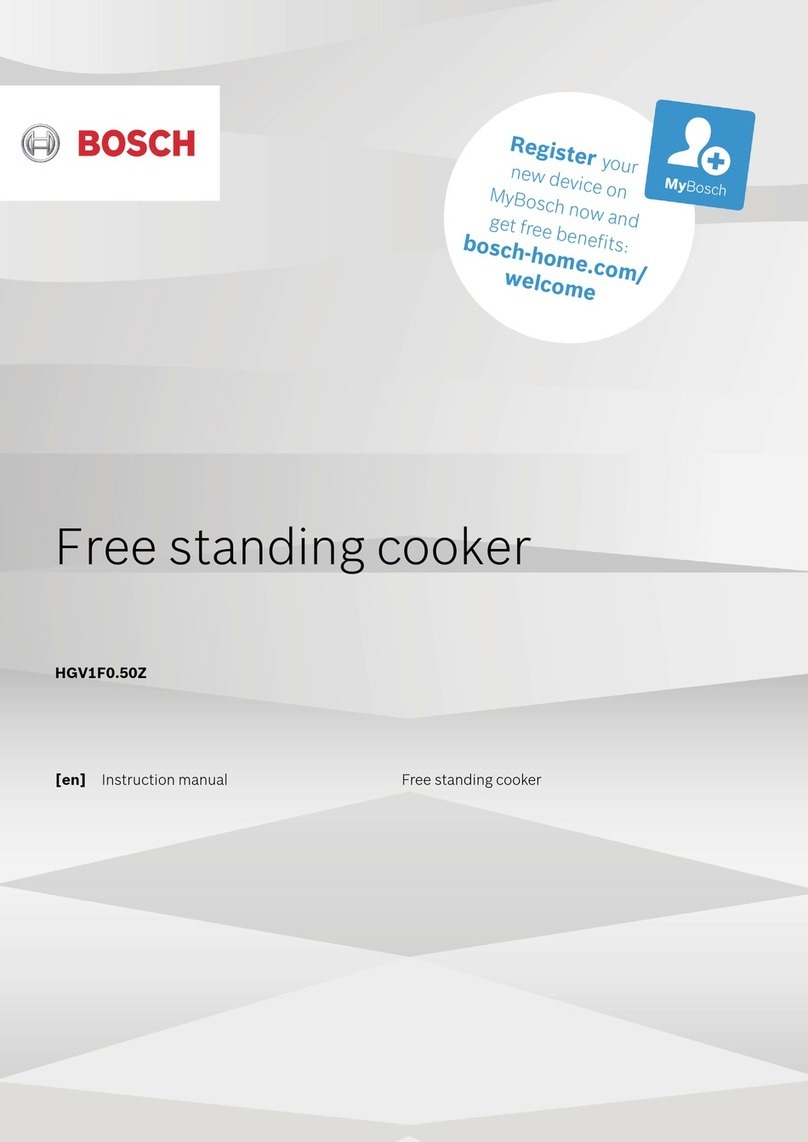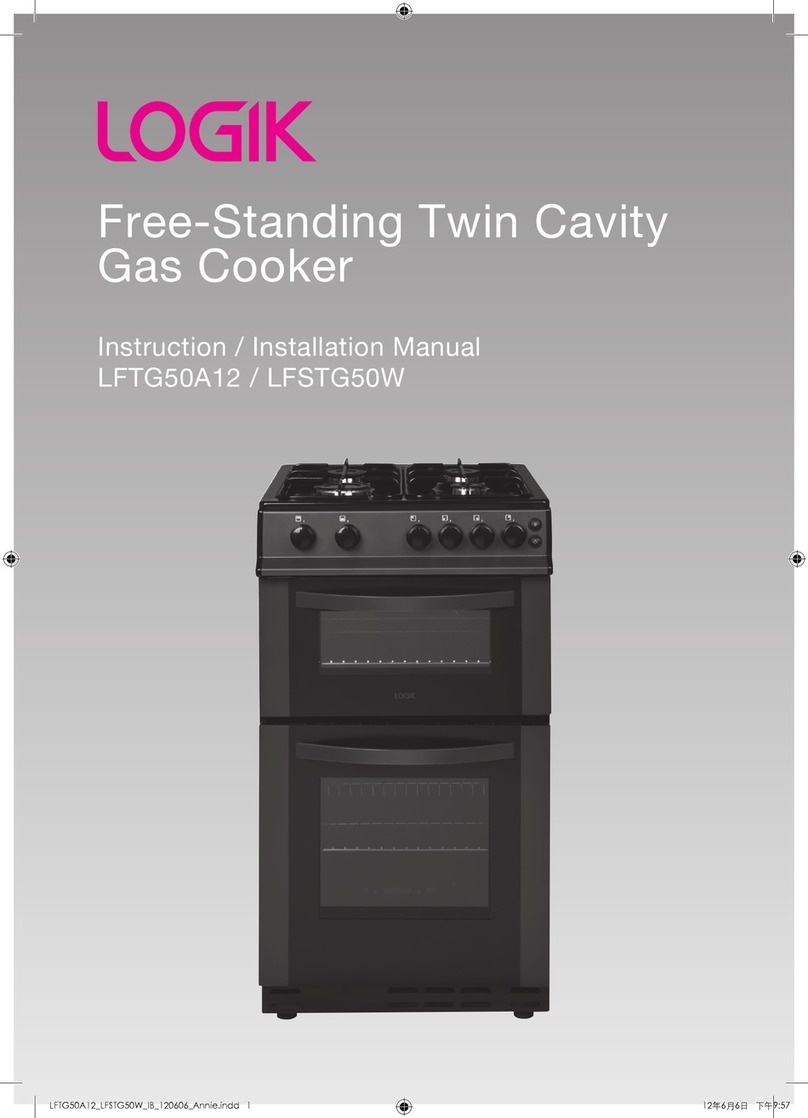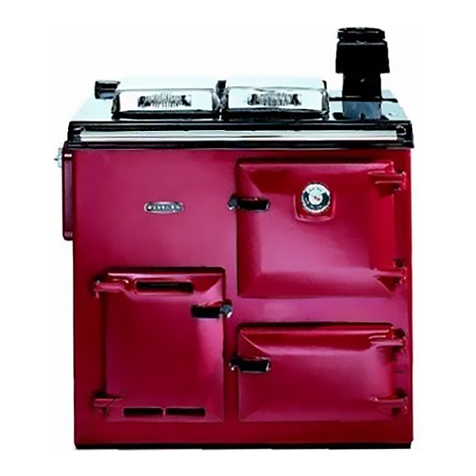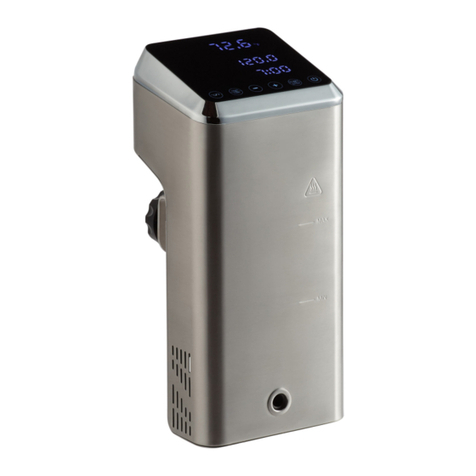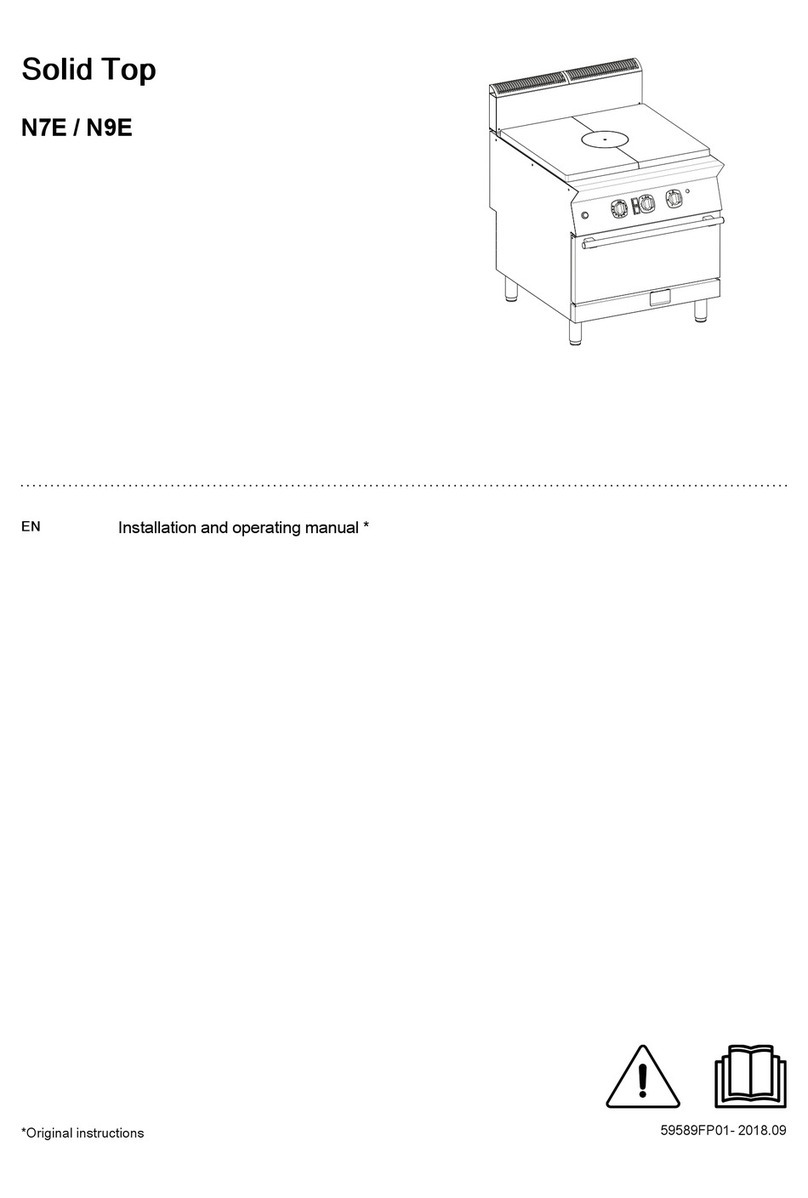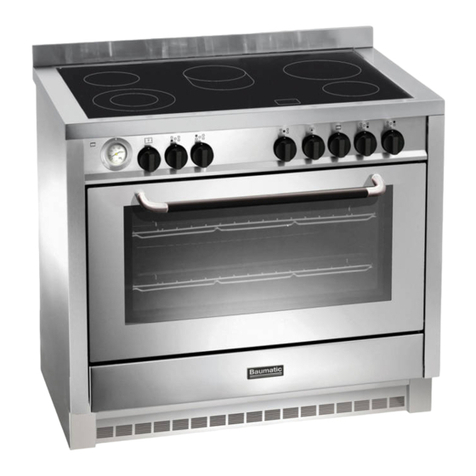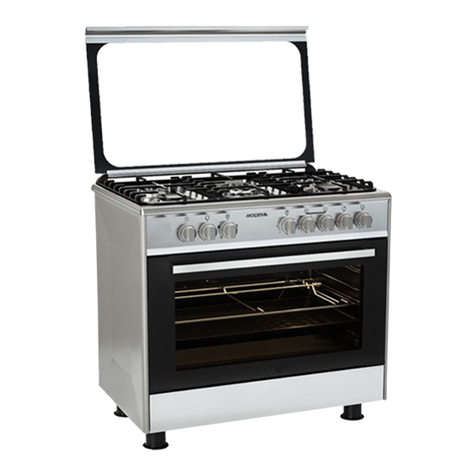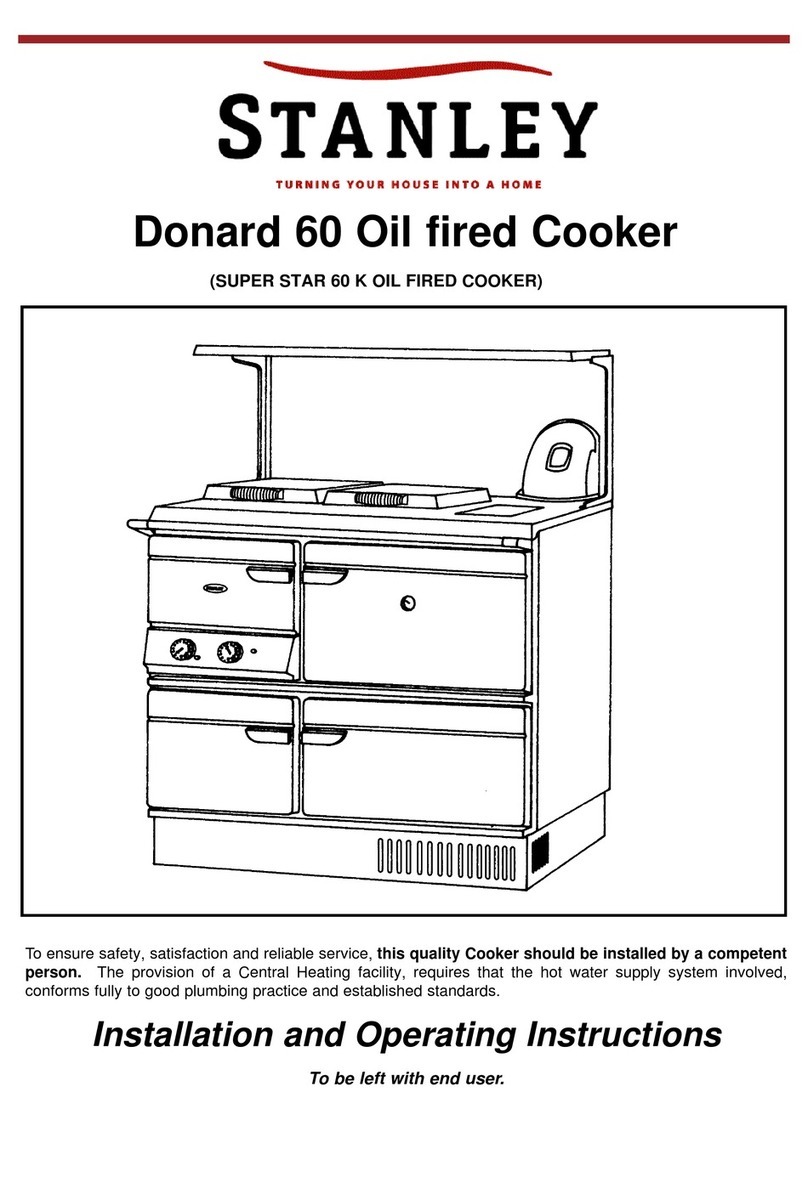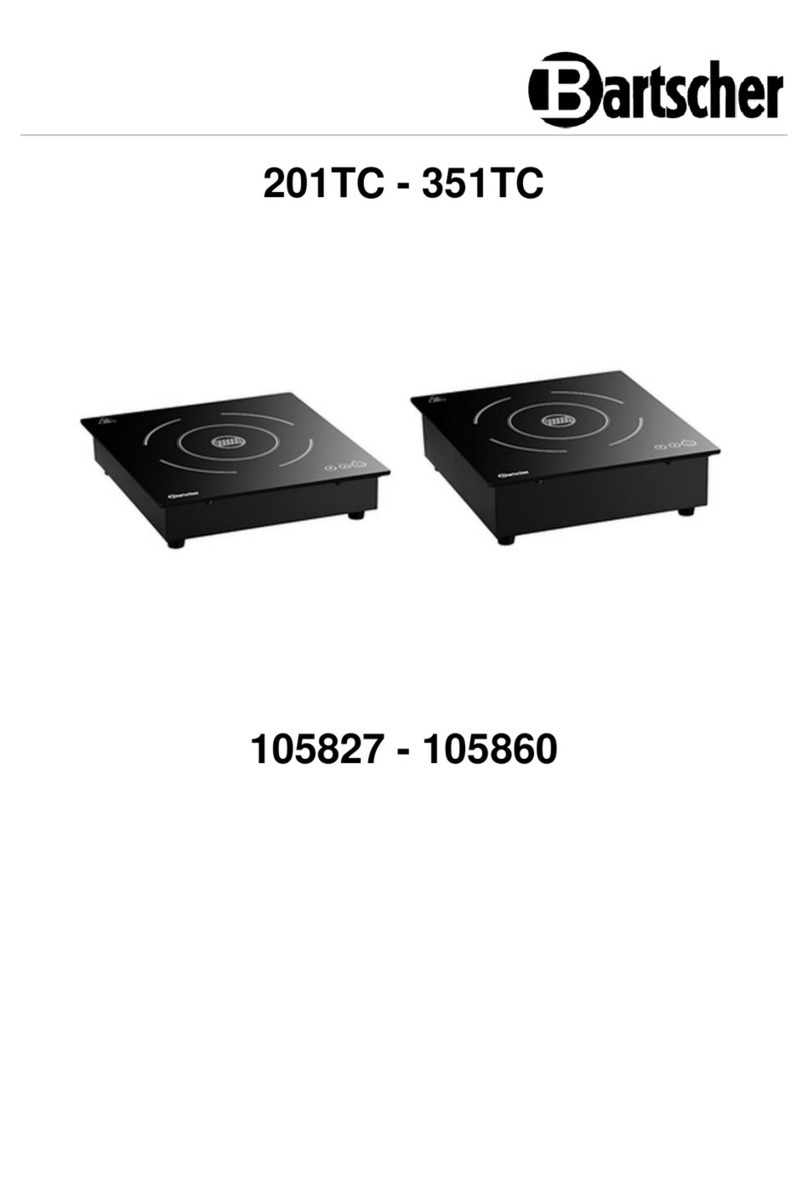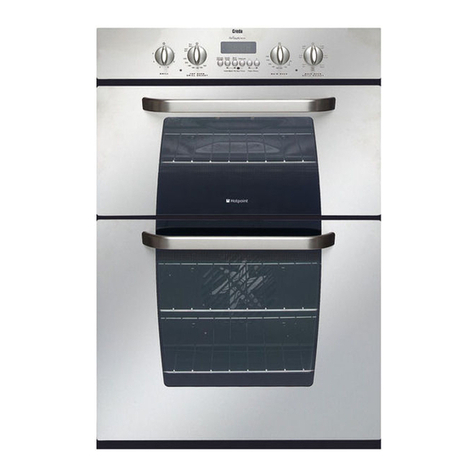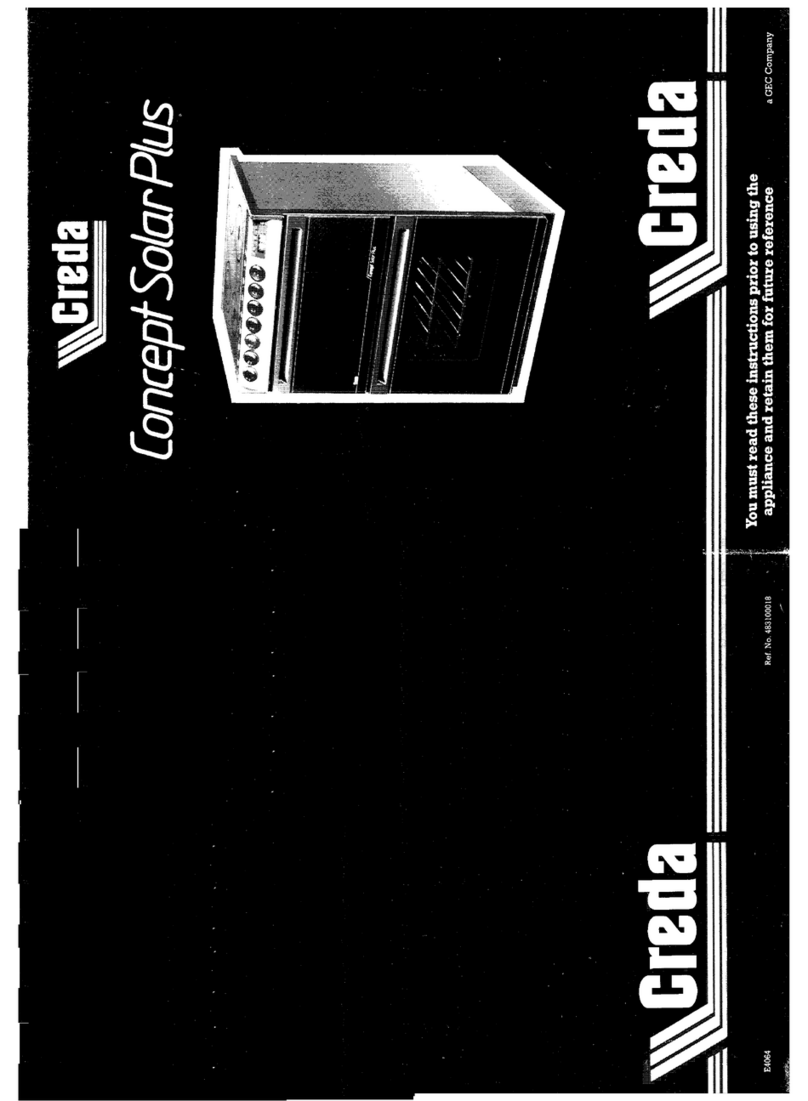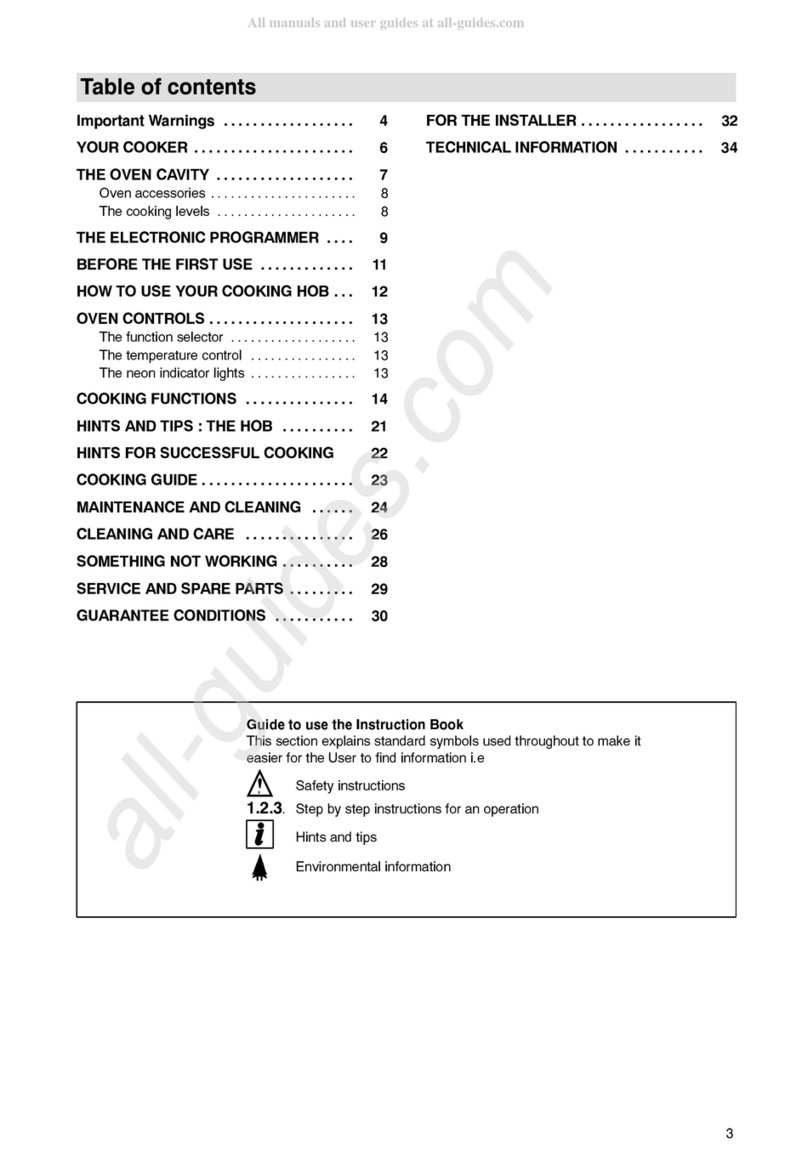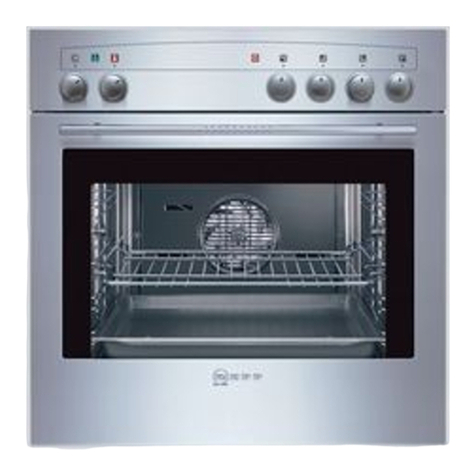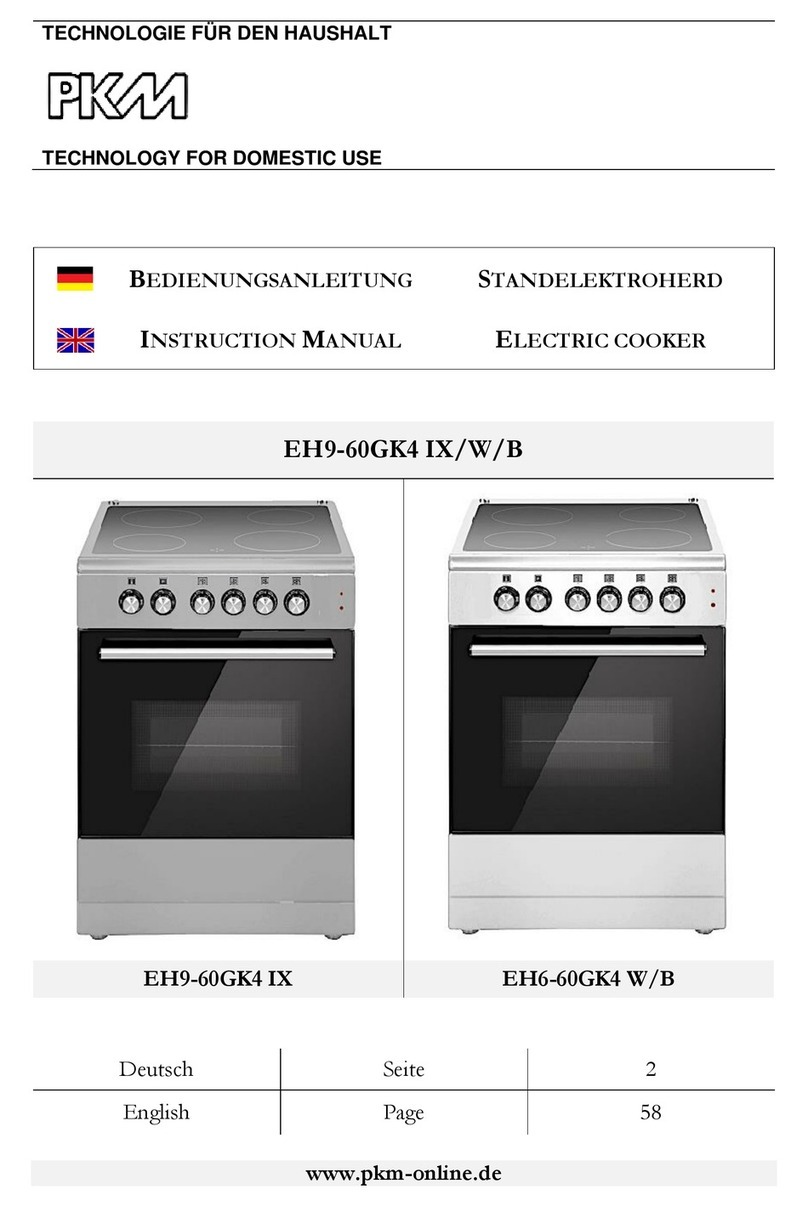
3
Important information
The appliance must only be converted from one gas type to
another by authorised personnel who have received
appropriate training. The procedure must always be carried
out in accordance with the instructions in this manual.
Incorrect connection and incorrect settings configuration
may damage the appliance. The manufacturer accepts no
responsibility for failure to connect or configure the
appliance correctly.
Always observe the symbols on the rating plate. If there is no
symbol that is relevant to your country, comply with the
technical guidelines in force in your country when configuring
the appliance.
Find out which gas type and which gas pressure your local gas
supply network uses before installing the appliance. Make sure
that all settings have been configured correctly before starting
to use the appliance.
Always observe local and national guidelines and regulations.
All the connection data you need can be found on the rating
plate to the right of the appliance door.
Enter the following data in the table:
Product number (E no.)
Production number (FD)
Enter the factory settings for the gas type/gas pressure in the
table and then add the applicable gas type/gas pressure
settings for once conversion has been carried out.
Caution!
After converting the appliance from one gas type to another,
the new gas type must be indicated on the rating plate.Use a
gas conversion label to do this. The gas type is marked with an
asterisk (*) on the label. The label detailing the gas type
(marked with an asterisk (*)) to which the appliance has been
converted must be adhered in the designated place on the
rating plate.
The changes made to the appliance and the type of connection
are essential to enabling the appliance to work safely and in
accordance with the relevant regulations.
: Risk of gas escape!
■After connecting the appliance to the gas supply, always
check the connection for leak tightness. The manufacturer
accepts no responsibility for the escape of gas from a gas
connection which has been previously tampered with.
Risk of gas leak!
■Do not move the appliance by pulling on the gas pipe
(collector). This could damage the gas pipe.
Risk of gas leak!
■The appliance must not be moved once it has been installed.
If you do move the appliance once it has been installed,
check that the connection is leak-tight.
Switch off the power and gas supply before carrying out any
work.
This appliance must not be installed on boats or in vehicles.
Choose which side of the appliance to
connect the gas on (* optional)
The gas supply to the appliance can be connected on the left
or right. The side on which the gas supply is connected can be
changed if necessary.
Connect the main gas supply.
If you change the side on which the gas supply is connected,
the gas connection piece on the side that is not being used
must be sealed with a blind plug.
To do this:
1. Place the new seal in the blind plug. Make sure the seal is
seated correctly.
2. Secure the gas connection piece to the appliance using a 22
mm spanner and place the blind plug onto the connection
piece using a 24 mm spanner.
Once the side on which the gas supply is connected has been
changed, check that the connection is leak-tight. See the
section entitled "Leak testing" for more information about this.
Note: Use a torque wrench to connect the appliance.
* Option: Only valid for some models.
Guidelines for ventilation
This appliance must only be installed in a room that is
sufficiently ventilated.
If the total power for all gas appliances is below 11 kW, then
this requirement is met if the installation room has a volume of
over 15 m³ and at least one door leading outside or one
window that can be opened.
If the total power for all gas appliances is above 11 kW, then
this requirement is met if the installation room has a volume of
over 2 m³ per kW and at least one door leading outside or one
window that can be opened. Furthermore, an exhaust extractor
hood or a controlled domestic ventilation system (no
recirculated air operation) should be present and should have a
minimum flow volume of 15 m³/h for each kW of total power for
all gas appliances. Appropriate supply air openings must be
present.
Note: In some countries, the requirements for minimum room
volume vary. Find out information on this from your after-sales
service.
E no. FD
After-sales service O
Gas type/gas pressure
This data can be found on the
rating plate
Gas type/gas pressure
Data following gas conversion
1P
6:6:

